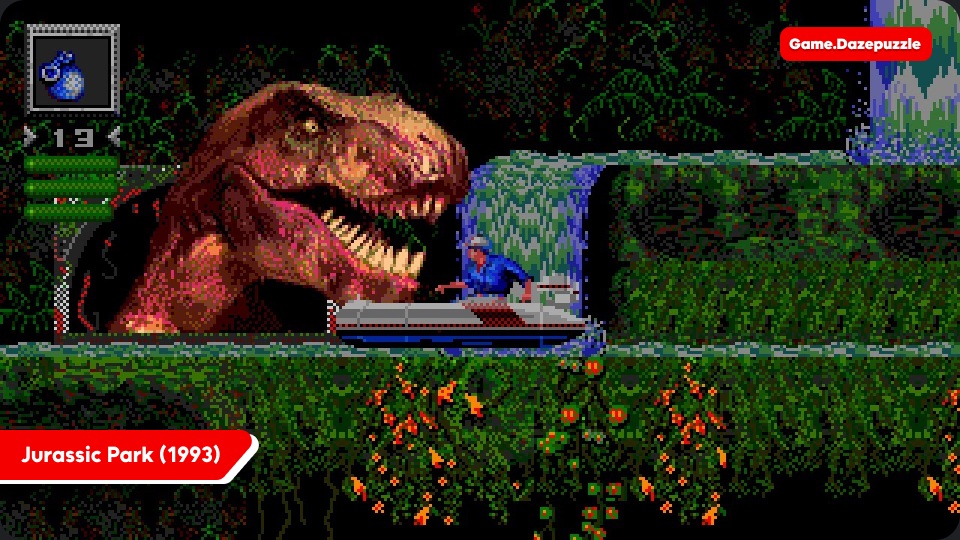
From Silver Screen to Interactive Adventure: How Movies Inspire Memorable Games
The line between cinema and gaming has become increasingly blurred over the years, with each medium borrowing and influencing the other. While film has often drawn inspiration from video games in terms of narratives and visuals, the reverse is just as true. Adventure games, in particular, have a rich history of drawing inspiration from movies, weaving cinematic storytelling, iconic characters, and memorable set pieces into interactive experiences that allow players to step into the shoes of their favorite film heroes (or villains). This connection isn’t merely about licensed adaptations; it’s about understanding the core elements that make a film compelling and translating them into a rewarding and engaging gameplay experience.
The Allure of Cinematic Storytelling in Adventure Games
Adventure games, at their heart, are about exploration, puzzle-solving, and, most importantly, narrative. Movies excel at crafting compelling narratives, introducing intriguing characters, and building suspense through expertly paced plots. This is why adventure game developers often look to films for inspiration, seeking to replicate the emotional resonance and narrative depth that makes a movie memorable.
One of the earliest and most obvious forms of movie influence on adventure games is the licensed adaptation. Games based on popular film franchises like Indiana Jones, Star Wars, Back to the Future, and Jurassic Park have a long and storied history. These games offer players the chance to actively participate in familiar narratives, interacting with beloved characters and exploring iconic locations. The success of these adaptations hinges on their ability to capture the spirit of the source material while providing a unique and engaging gameplay experience.
However, the influence extends far beyond direct adaptations. Many adventure games, while not explicitly based on a particular film, borrow heavily from cinematic tropes and styles. Consider the influence of film noir on games like Grim Fandango. The game, with its darkly humorous story, stylish characters, and mystery-driven plot, owes a clear debt to classic noir films like The Maltese Falcon and Double Indemnity. Similarly, games like Broken Sword: The Shadow of the Templars borrow the adventurous spirit and historical mystery elements of films like Raiders of the Lost Ark and The Da Vinci Code, placing players in the role of amateur sleuths uncovering ancient secrets.
Gameplay Mechanics Inspired by Cinematic Techniques
The connection between movies and adventure games isn’t just about narrative; it also extends to gameplay mechanics. Cinematic techniques, such as dramatic camera angles, suspenseful music, and impactful cutscenes, are often employed to enhance the player’s immersion and create a more engaging experience.
Many adventure games utilize cinematic camera angles to frame scenes and draw the player’s attention to important details. This is particularly evident in games that employ a third-person perspective, allowing the player to view the action from a more cinematic vantage point. The use of dynamic camera angles during key moments, such as puzzle solutions or tense confrontations, can heighten the drama and create a more memorable experience.
Music also plays a crucial role in both film and adventure games. A well-crafted soundtrack can evoke specific emotions, build suspense, and enhance the overall atmosphere of the game. Many adventure games draw inspiration from film scores, utilizing orchestral arrangements and thematic melodies to create a sense of grandeur and immersion.
Cutscenes, short cinematic sequences that interrupt gameplay, are another common feature in adventure games that are heavily influenced by film. These scenes are often used to advance the plot, introduce new characters, or showcase dramatic events. While cutscenes can be a point of contention among some gamers, they can be an effective way to deliver exposition and enhance the cinematic feel of the game, especially when they are integrated seamlessly into the gameplay.
Beyond Adaptation: Thematic Inspiration and Homage
The most interesting examples of movie influence in adventure games often lie not in direct adaptations, but in thematic inspiration and homage. Games that draw inspiration from the atmosphere, themes, and characters of specific films, while creating their own unique narratives and gameplay experiences, can offer a fresh and compelling take on familiar tropes.
For example, the survival horror adventure game Alone in the Dark (the original) draws heavily from the works of H.P. Lovecraft and the atmosphere of classic horror films like The Haunting. The game’s eerie setting, psychological horror elements, and focus on investigation create a chilling and immersive experience that is reminiscent of classic gothic horror cinema.
Similarly, games like Kentucky Route Zero draw inspiration from the surreal and dreamlike qualities of films like Mulholland Drive and Eraserhead. The game’s unique art style, ambiguous narrative, and focus on atmosphere create a sense of unease and mystery that is characteristic of David Lynch’s work.
Challenges and Opportunities in Bridging the Gap
While the connection between movies and adventure games offers numerous opportunities for creative expression, it also presents several challenges. One of the biggest challenges is striking the right balance between staying true to the source material and creating a unique and engaging gameplay experience. Licensed adaptations can often fall into the trap of simply recreating scenes from the film without adding anything new or interesting to the experience.
Another challenge is adapting the passive experience of watching a movie into the active experience of playing a game. Movies are a linear medium, where the audience is a passive observer. Adventure games, on the other hand, require the player to actively participate in the narrative and solve puzzles to progress. Developers must find ways to translate the cinematic storytelling of film into interactive gameplay mechanics that keep the player engaged and motivated.
Despite these challenges, the future of movie-inspired adventure games looks bright. As technology continues to advance, developers have access to increasingly sophisticated tools and techniques for creating immersive and cinematic gaming experiences. The rise of virtual reality and augmented reality also offers exciting new possibilities for blurring the lines between film and games, allowing players to step into virtual worlds and interact with their favorite movie characters in unprecedented ways.
Examples of Games Heavily Inspired by Movies:
- L.A. Noire: A love letter to classic film noir, with a gripping detective story, authentic 1940s setting, and interrogation mechanics that feel ripped straight from a film.
- Heavy Rain: A cinematic thriller with multiple playable characters and branching storylines, reminiscent of films like Seven and The Silence of the Lambs. Player choices have significant consequences, blurring the line between game and interactive movie.
- The Walking Dead (Telltale Series): A narrative-driven adventure game inspired by the comic book series and television show of the same name, focusing on character relationships and difficult moral choices in a zombie apocalypse. The game’s episodic structure and emphasis on emotional storytelling are heavily influenced by television dramas.
- Beyond: Two Souls: A supernatural thriller with a focus on character development and emotional storytelling, featuring motion capture performances from actors like Ellen Page and Willem Dafoe. The game’s cinematic presentation and emphasis on player choice are reminiscent of interactive dramas.
- Disco Elysium: While not directly based on a film, the game’s hardboiled detective setting, complex political themes, and stream-of-consciousness writing style draw heavily from noir and existentialist cinema.
In conclusion, the relationship between movies and adventure games is a dynamic and evolving one. From direct adaptations to thematic inspiration, movies have played a significant role in shaping the genre, influencing everything from narrative and gameplay mechanics to visual style and atmosphere. As technology continues to advance and the line between film and games becomes increasingly blurred, we can expect to see even more innovative and exciting examples of movie-inspired adventure games in the years to come. The future of adventure gaming promises to be a cinematic journey, where players can actively participate in their favorite stories and experience the thrill of becoming the heroes (or villains) of their own movie-inspired adventures.

